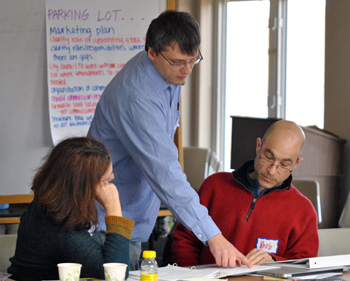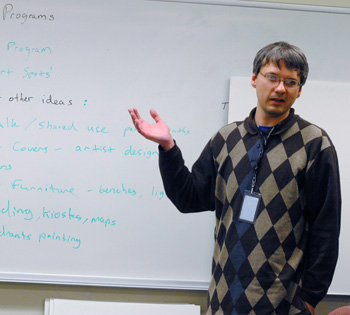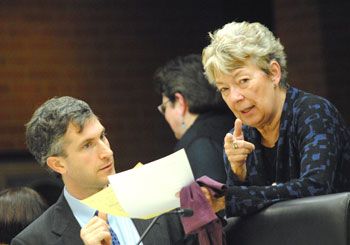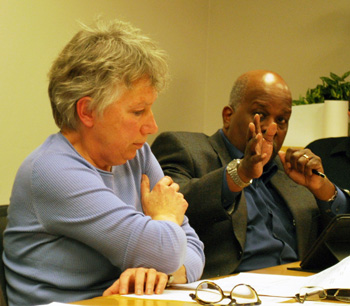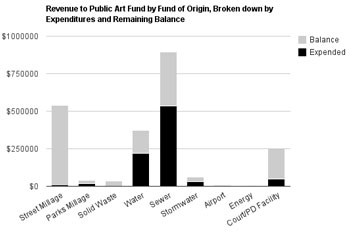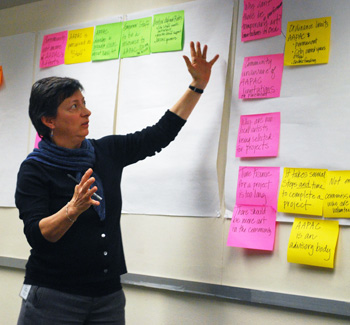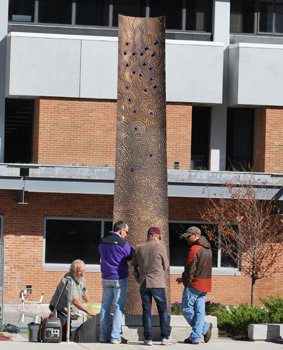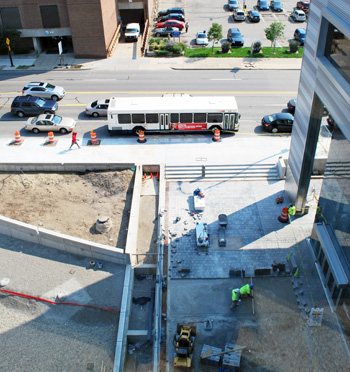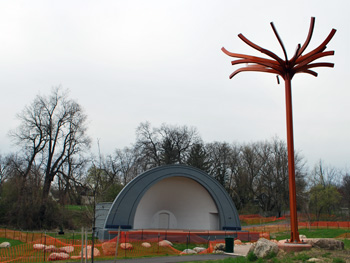Art Commission Strategizes as Millage Looms
Ann Arbor public art commission meeting (Aug. 22, 2012): Two days after the Ann Arbor city council voted to put a millage on the Nov. 6 ballot to fund art in public places, several leaders of the arts community attended the public art commission’s regular monthly meeting to offer support for a millage campaign.
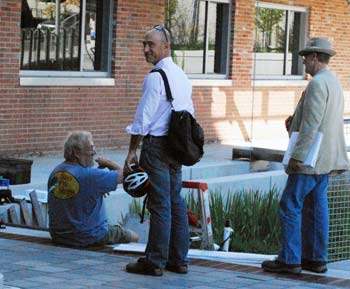
In front of Ann Arbor city hall, from left: electrician Jim Fackert, and Ann Arbor public art commissioners Bob Miller and John Kotarski. Fackert was again working on the system that operates the Dreiseitl water sculpture, which includes water pumps and flashing blue lights. Miller and Kotarski were headed into the Aug. 22 meeting of the public art commission. (Photos by the writer.)
Dealing with the millage wasn’t the commission’s main agenda item, but they did spend some time talking about the need for a separate campaign committee. AAPAC chair Marsha Chamberlin stressed that the commission itself can’t advocate for the millage, ”but we can educate out the wazoo.”
As individuals, though, commissioners will likely be very active – Chamberlin will be among those organizing the campaign, along with Arts Alliance president Deb Polich, who attended AAPAC’s Aug. 22 session. Mark Tucker of FestiFools was there too, and told commissioners that he and others were brainstorming on free or inexpensive ways to support the millage – including a “surprise” that involves football Saturdays and is “FestiFoolian in nature” to attract media coverage.
Ken Clein also volunteered to help. He was on hand to update commissioners on the status of the Herbert Dreiseitl water sculpture in front of city hall, as a follow-up to concerns raised in June about the installation. Clein is a principal with Quinn Evans Architects, the Ann Arbor firm that handled the design of the new Justice Center and oversaw its construction. Though delayed, the Dreiseitl installation is nearly completed and will be handed off to the city soon, along with a two-year maintenance warranty.
The sculpture is the largest and most expensive project coordinated by the commission, and the first one approved under the Percent for Art program. The two newest public art projects were added to the pipeline at the Aug. 22 meeting, on unanimous votes. They’ll eventually be located at: (1) Forest Avenue Plaza, next to the Forest Avenue parking structure near South University; and (2) a future roundabout at Ellsworth and South State.
In a written report, commissioners were given an update on available funds in the Percent for Art budget. Of the $1.668 million balance, $856,997 is earmarked for projects already approved by AAPAC, including $400,000 for artwork at the East Stadium bridges and $150,000 for Argo Cascades – but aspects of those projects are still under review by the city’s legal staff. That leaves $810,276 in unallocated funds. The largest amounts are in revenues from sewer projects ($451,955) and street millage projects ($241,951).
The commission also finalized its four-year strategic plan, and moved ahead on a new effort to involve residents in planning for public art in each of four quadrants in Ann Arbor. [Full Story]









